Last Updated on September 19, 2020
It was 5 pm and the sun was already on the wrong side of the horizon. The flickering solar lights at the forest guest house where we were staying at looked feeble from where we were standing. We were atop a small mound of sand overlooking the Noa-dihing River. The only sounds we could hear were the occasional flaps from the birds, flying back home, and of the river making its way through its pebble-strewn bed. We were at Namdapha National Park.
The quaint Miao village
The previous evening we had reached Miao, a village located on the fringes of Namdapha National Park.
Miao is a small settlement with some modern government quarters, a few traditional Singpho houses, a Buddhist monastery, a mini zoo and a museum, an inspection bungalow, an eco-tourist hut and a cute little market.
Our friend and host, Mr. Phupla Singpho, had already arranged for our stay at the eco-tourist hut at Miao for the night. He stays in his very modern concrete house with his family right opposite to his more traditional wooden family home. He has been instrumental in bringing global importance and interest to the Namdapha National Park.
Singpho tribe
The Singpho tribe of Arunachal Pradesh inhabit the district of Changlang and are mainly Theravada Buddhists. They are traditional tea planters. The Singpho produce their tea by plucking the tender leaves and drying them in the sun and exposing them to the night dew for three days and nights. The leaves are then placed in a hollow bamboo and exposed to smoke over a fire. This way, their tea can be kept for years without losing its flavour. Mr. Singpho presented us with this ingeniously produced tea. I felt a bit awkward presenting him in return a plastic packet of Coorg coffee.
After checking into our room at around 2 pm, we had a couple of hours before sundown. Yes, the sun sets in these regions very early and before 5 pm the street lights are on. There is a serious demand to have a separate time zone for the northeastern states with suggestions for advancing the clock by at least 90 minutes. This is because the day breaks early in the northeast with the sun normally rising way ahead of other Indian cities. When we were in Miao, in October, the sunrise was recorded at 5.05 am and the sunset at 4.55 pm, whereas the same in Bangalore, where we stay, was recorded at 6.10 am and 6.07 pm, respectively.
The British were smarter. They had set the local time one hour ahead of IST for tea gardens, coal mines and the oil industry in these parts. Some of the tea gardens still follow the ‘Bagaan (garden) time’!
Singpho Buddhist Monastery, Miao
Before sundown, we decided to visit the Singpho monastery nearby.
We were welcomed by a group of dogs who were loitering around the monastery.
The monastery itself is an imposing structure painted with vibrant colours of yellow and maroon. Narendar Bhikku, the head monk, was kind enough to spend some time with us, even presenting us with a book on Buddhism.
He had been staying at this monastery for more than 40 years. The altar had numerous idols of Buddha and there was a stupa and a Bodhi tree outside.
The museum and the zoo were already closed, so we walked back to the eco-tourist hut, had dinner and slept early.
To Namdapha National Park
About 25 km and 2 hours from Miao lies Namdapha National Park, a wildlife enthusiast and biologists’ dream come true. The next day, we stocked up on our dry provisions from the market and started our journey around 8 am in a Tata Sumo. The road on the way is so bad that only the bigger vehicles dare to venture into the forest. We were first stopped at a check post manned by the 18 Assam Rifles. The army is overpowering with its presence in Arunachal Pradesh and you can be stopped at any check post. Visitors entering the state are checked for their Inner Line Permits and Tourist Permits that must be obtained before entering the Namdapha National Park.
Our host had arranged for our stay at Deban, the forest headquarters within the park and the only accommodation option at Namdapha National Park. The drive takes you through a jungle path that may take about an hour-and-a-half, depending on the state of repair of the roads or the intermittent landslides that occur in these regions. We were lucky not to face any landslides. We crossed the bridge over the Noa-dihing River, some traditional houses on stilts on the edges of paddy fields and reached M’Pen stream, a perennial stream that normally overflows during the rains.
Our driver said that visitors to Namdapha National Park during monsoons often have to wait for up to two days for the stream to subside before it can be crossed by their vehicles. Sometimes one might even have to start walking from the M’Pen stream which forms the boundary of the park.
At the park gate
As soon as we crossed the stream we reached the park entry gate and our credentials were checked by the Forest Department staff posted there.
The rest of the journey took us through a thick jungle. It seemed as if the sun had already gone down, and it was not even 9 am. On one side of the jungle path, there were tall trees rising up to 100 m above us with a thick undergrowth of ferns, cane, and bamboo. On the other side beyond a gorge, the Noa-dihing river was following us.
We passed a small temple, turned a curve and reached a crossroad. There were two roads, one going downhill to the forest guest house at Deban and the other going uphill all the way to Vijoynagar, 157 km away, right on the India-Burma border.
Deban
We followed the road downhill and reached our home for the next three days and nights. The Deban Rest House is located within the Namdhapa National Park and is managed by the Forest Department of Arunachal Pradesh. The rest house stands on a thickly wooded hill slope overlooking the Noa-dihing River. The mysterious forest seems to engulf you and certainly, there can be no better option for the adventurous.
We were booked into a double room on the ground floor in this conically shaped rest house. The more luxurious top floor rooms were meant for government officials and VIPs. Because we were neither, we settled for what we got which was the next best. Tourist huts, dormitories, and traditional huts are located away from the main structure towards the river. Right next to the main rest house is a mess room where meals are prepared by Gogoi da and his efficient team.
There is no electricity in the park. The rest house is electrified by solar-powered batteries. There is no public telephone service in Deban and our mobile phones were happily hibernating inside our backpacks. Once a day, and if any emergency arises, a wireless is used to communicate with the outer world.
Why is Namdapha National Park considered unique?
Namdapha National Park is unique in many ways.
- Declared a Project Tiger reserve way back in 1983, this is the only park in the world which has all the four big cats; the Tiger, the Leopard, the Snow Leopard and the Clouded Leopard.
- The park has a varying altitude, it ranges from 200 m to more than 4500 m.
- Dapha bum, the tallest peak in Arunachal, overlooks the park and is snow covered during winters.
- Namdapha National Park is home to India’s only ape, the Hoolock Gibbon.
- Namdapha is one of the few national parks in India which one can explore only on foot.
The first thing to keep in mind when you set out to explore this area is that you must do it in the right season. In the monsoons, the jungles are inaccessible, the river uncrossable and the blood-sucking leeches are out on the grounds and treetops looking for preys. Yes, on the treetops. There are about 5 species of leeches and some can even sense the human blood from about 10 feet away. There are leeches that hide in the ferns and branches and jump onto you from above!!
Our own zoo
We visited Namdapha in the right season. The river was flowing low, it was not the rainy or snowy season, but the forest staff was a bit behind schedule in clearing the jungle. It is an annual ritual of the forest staff to clear the jungle by marking well-defined trails for the convenience of the trekkers and wildlife enthusiasts. There are camping sites inside the jungle at various places.
Entering the jungle was out of the question for us. But the rest house surroundings is a mini zoo in itself. The whole place was swarming with butterflies, and it was not even season. The constant sound of the crickets seemed like an alarm clock that somebody forgot to turn off. And there was even a small snake lurking among the bushes right in front of our room even as we were checking in!!
Into the jungle
By the time we had checked in and freshened up, it was time for lunch. After lunch, we decided to explore the park by ourselves. We walked up the road on which we had come down a few hours earlier. The sounds of the jungle were mesmerizing.
A lot of birds were singing, hooting and clucking away merrily in the foliage. The constant sound of the river flowing by, adding up to the melody. As is normally the case, it is so hard to spot birds and even harder to photograph them. The luck with butterflies was better.
By the Noa-dihing River
The sun was going down slowly and we decided to walk to the riverside. A small concrete platform was built overlooking the river. But we walked down further to the sand mound to get a better view. The mound makes a perfect natural watch tower to check the river below, giving you good views of the huge mountains across the river.
Right next to the watchtower is a huge tree belonging to the Ficus species that towers over the guest house with its height and appearance. The lower portion of the trunk is split and it looks as if the tree has two legs, ready to walk away.
The sun was down in a few minutes and there was nothing to do other than enjoy the night sounds coming from the jungle – the occasional hoot from an owl, the crickets with their raucous calls and the cry of the barking deer somewhere nearby enhanced the surreal nature of the surroundings. The sight of the huge yellow moon, whose glow surrounded the valley was overwhelming. We decided to turn in early as we had a long day ahead of us.
For the next two days, we had planned to trek along the jungle road and had already spoken with the in-house wildlife enthusiast and expert Mr. Pung Jung.
Tomorrow was going to be busy. There were butterflies to be captured (on lens), birds to be identified, and leeches to be dodged. And if lucky, we could even spot a Hoolock Gibbon, a Hornbill, or one of the four big cats……
I love to be optimistic.


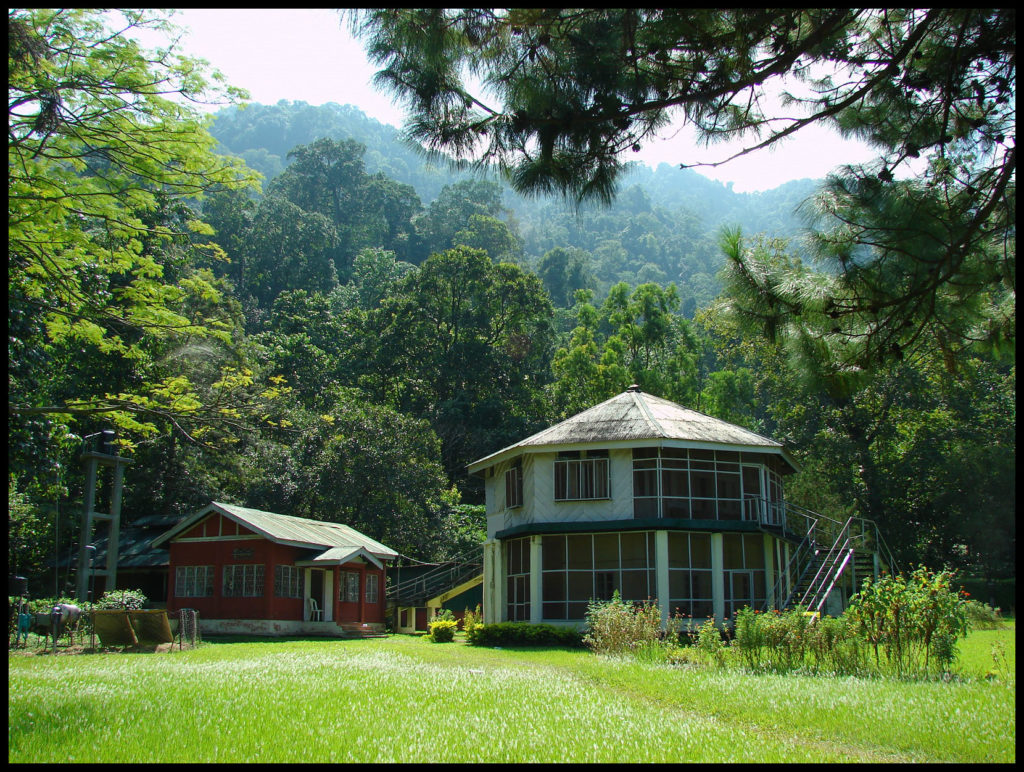


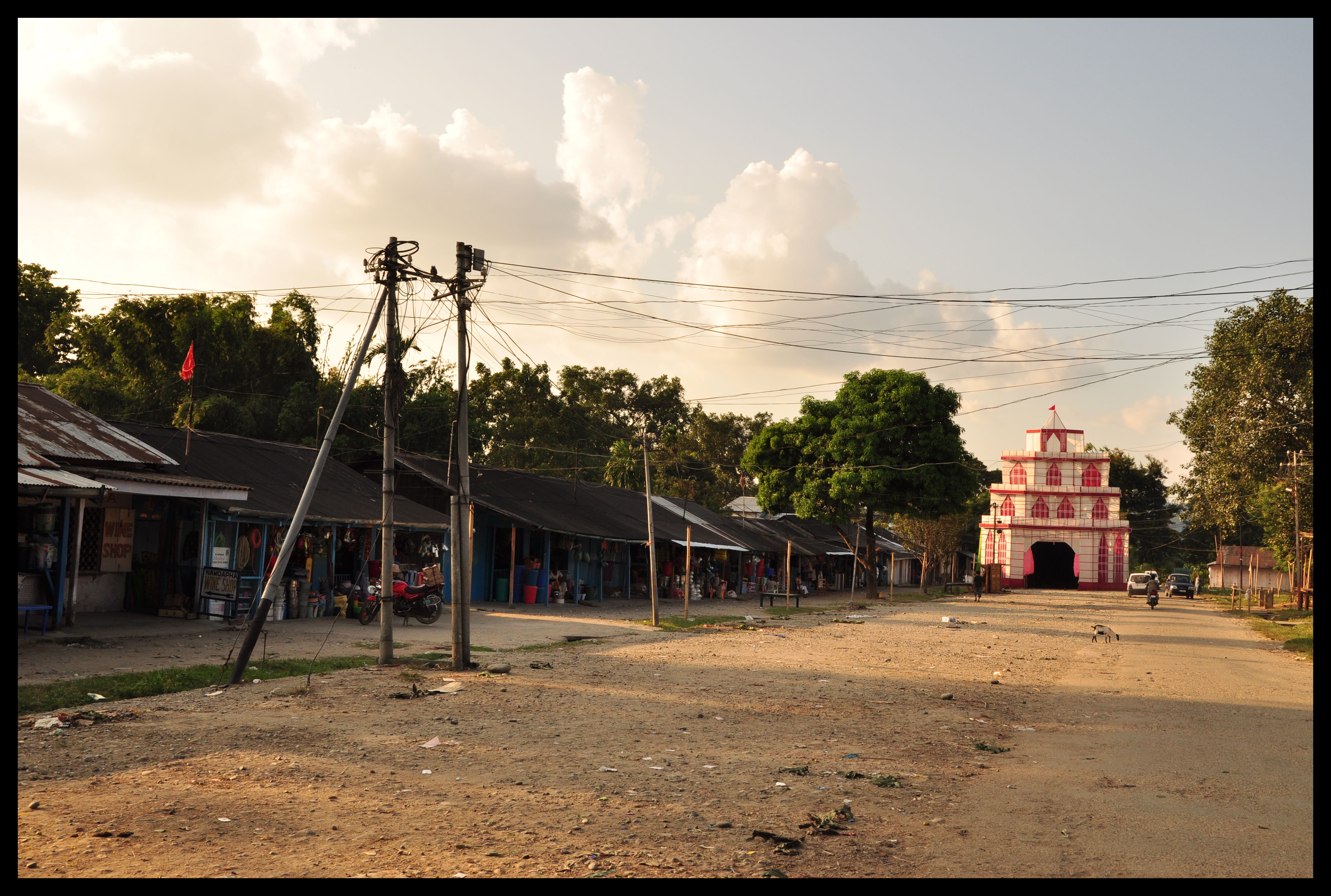
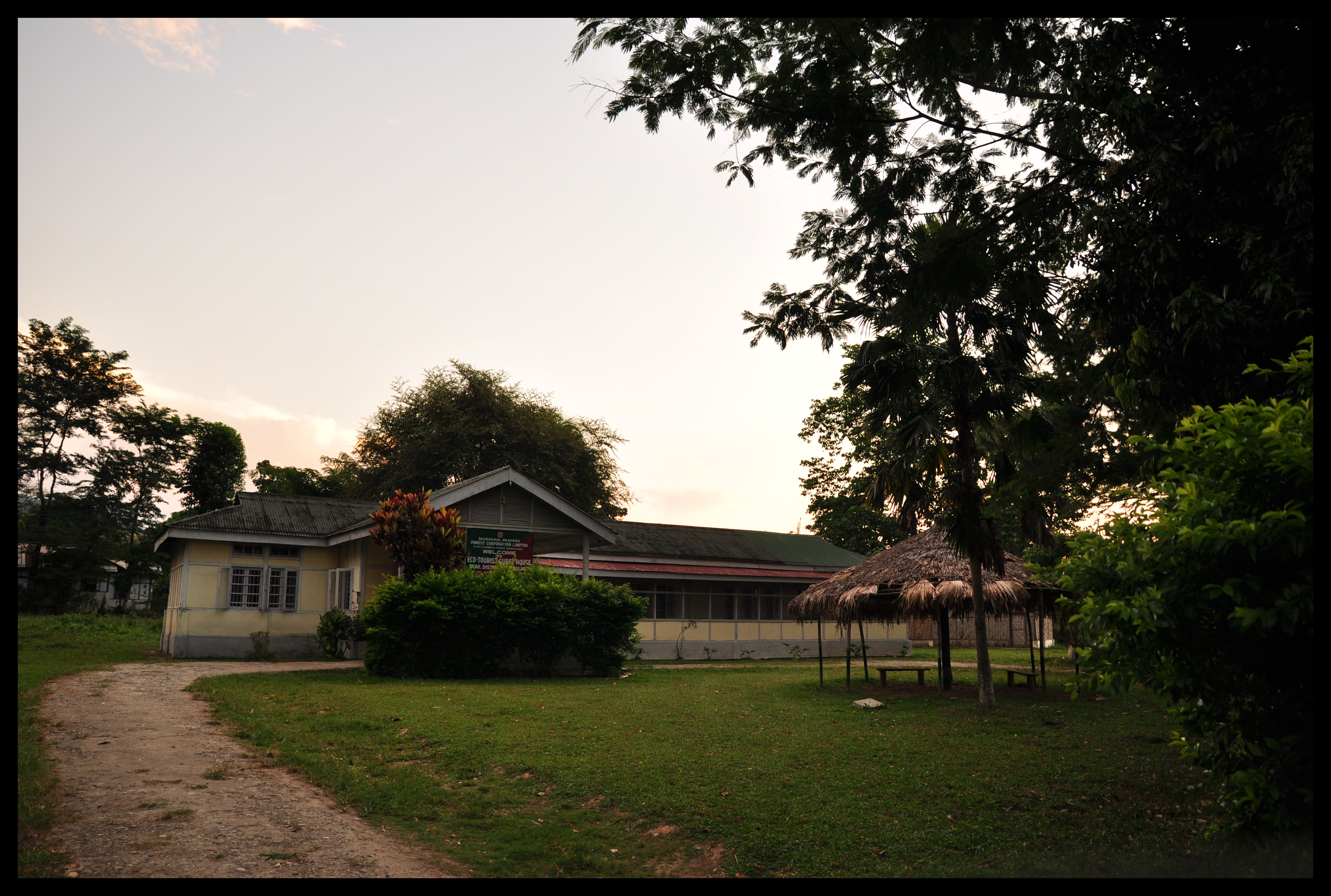

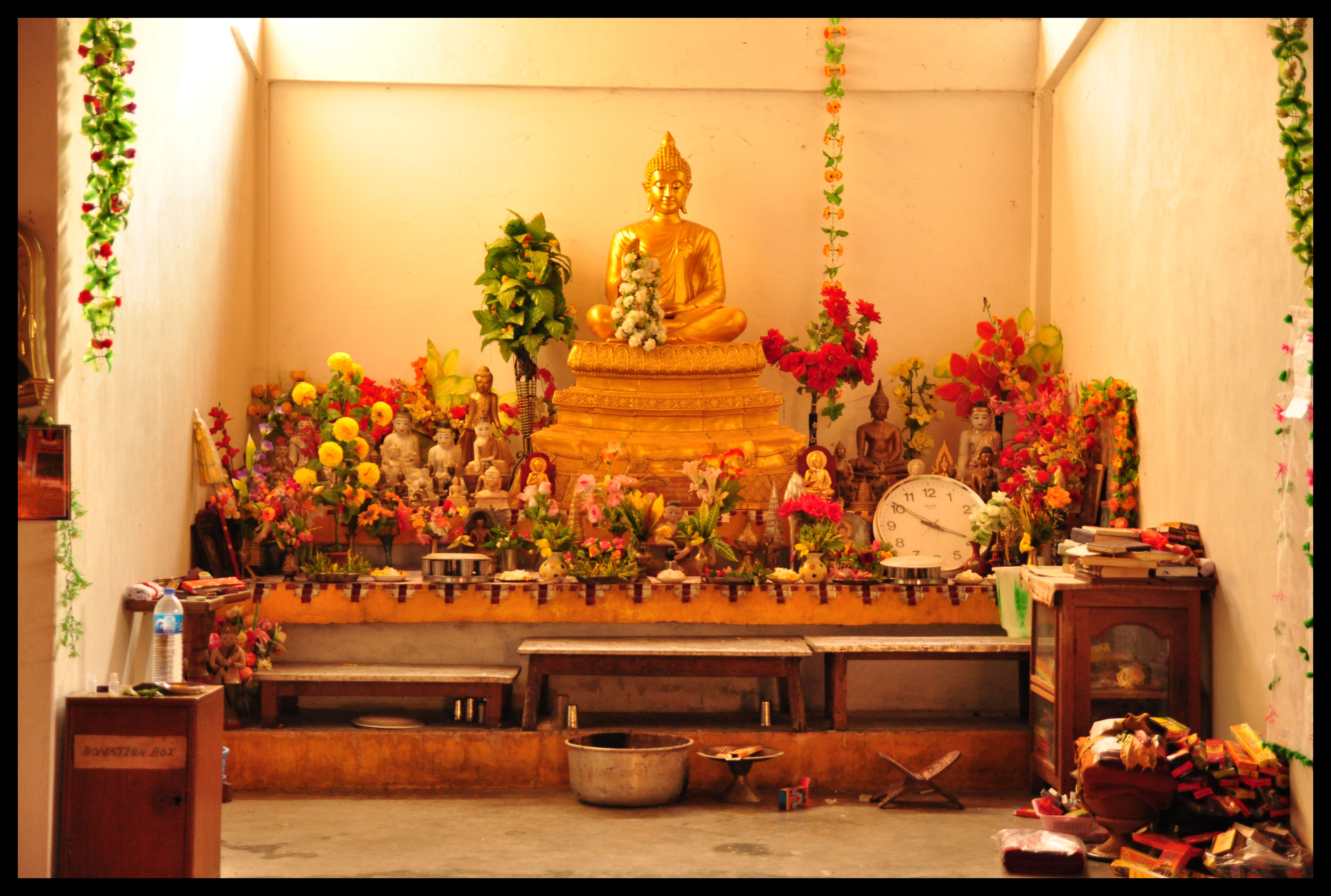

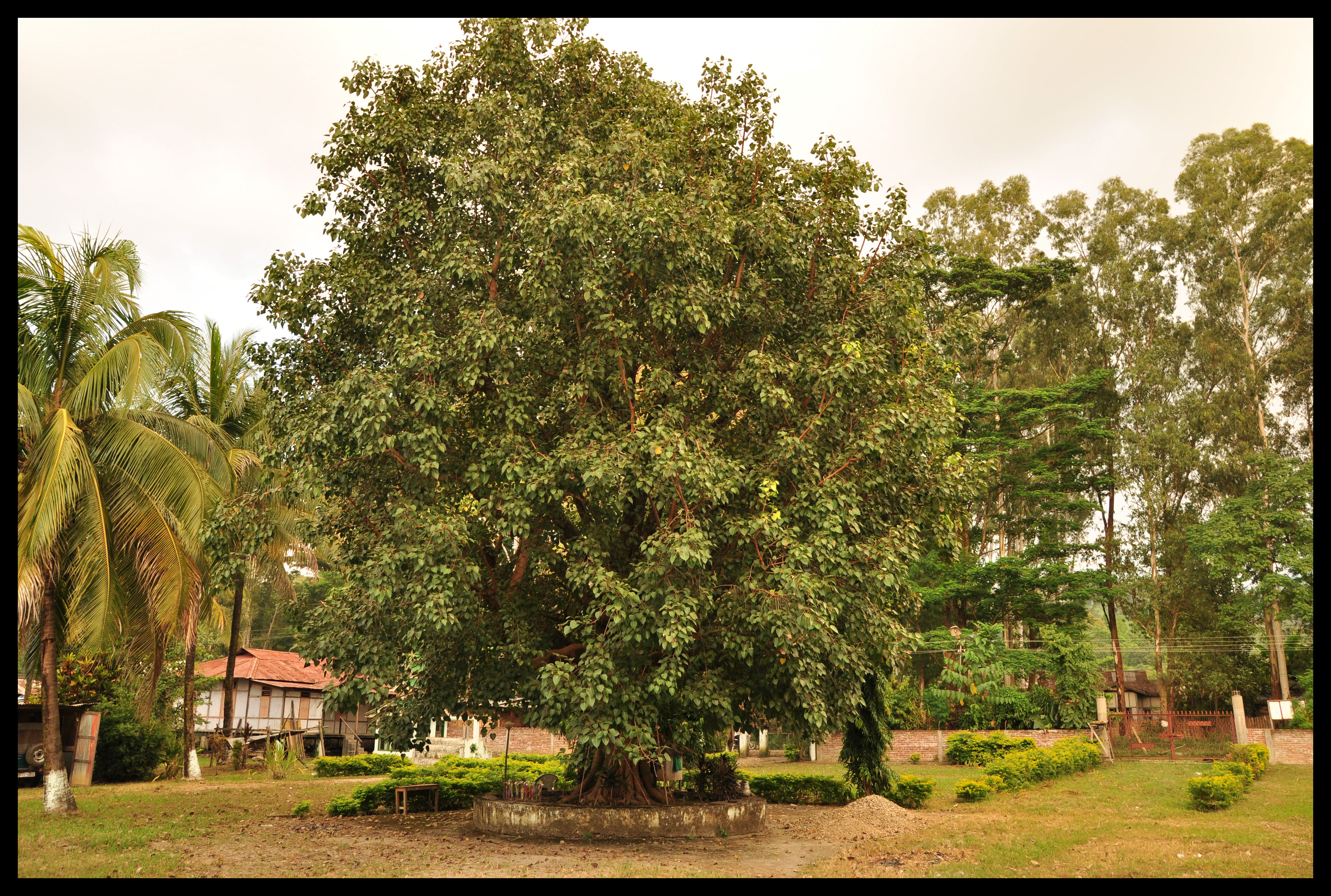



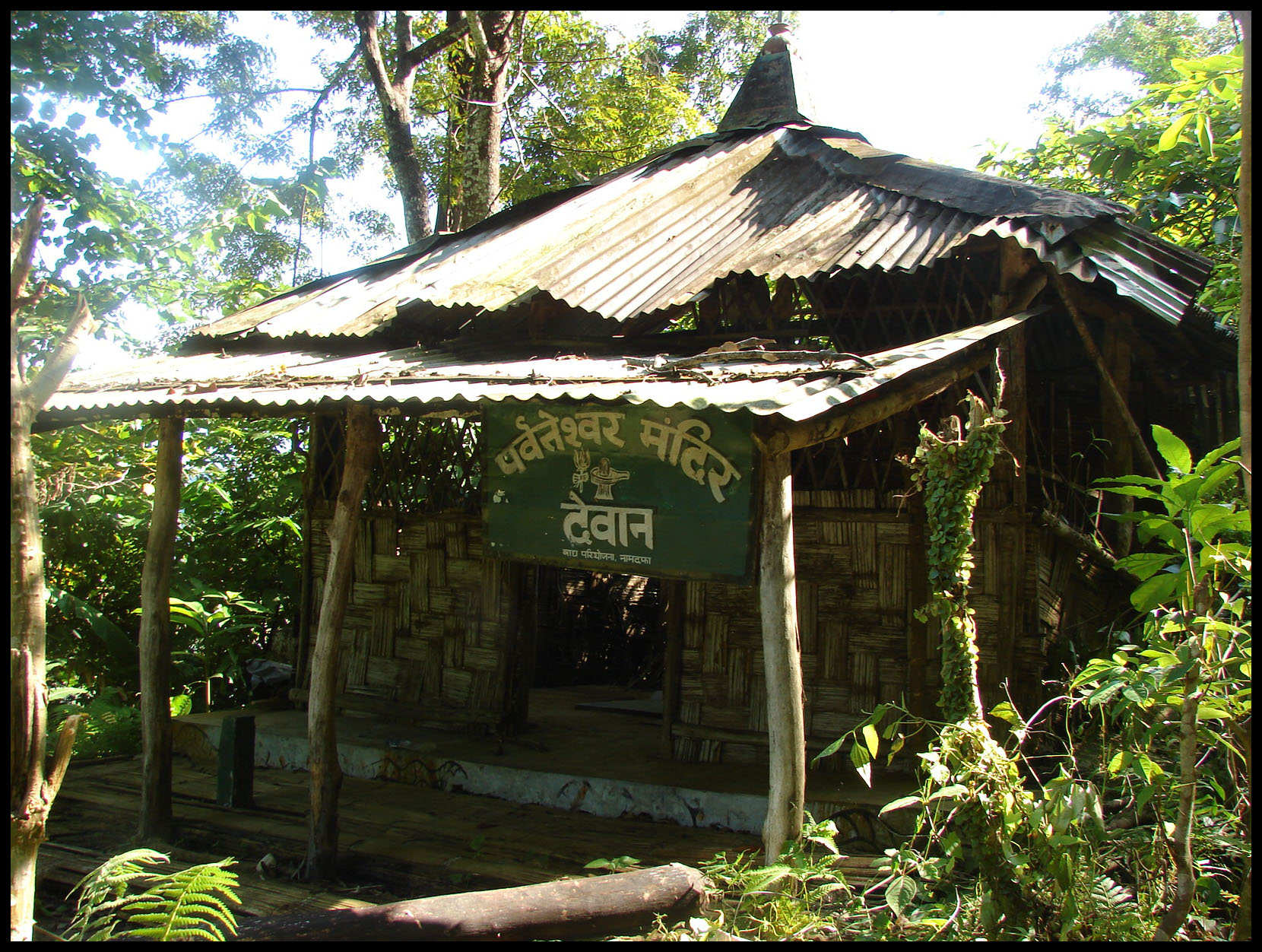
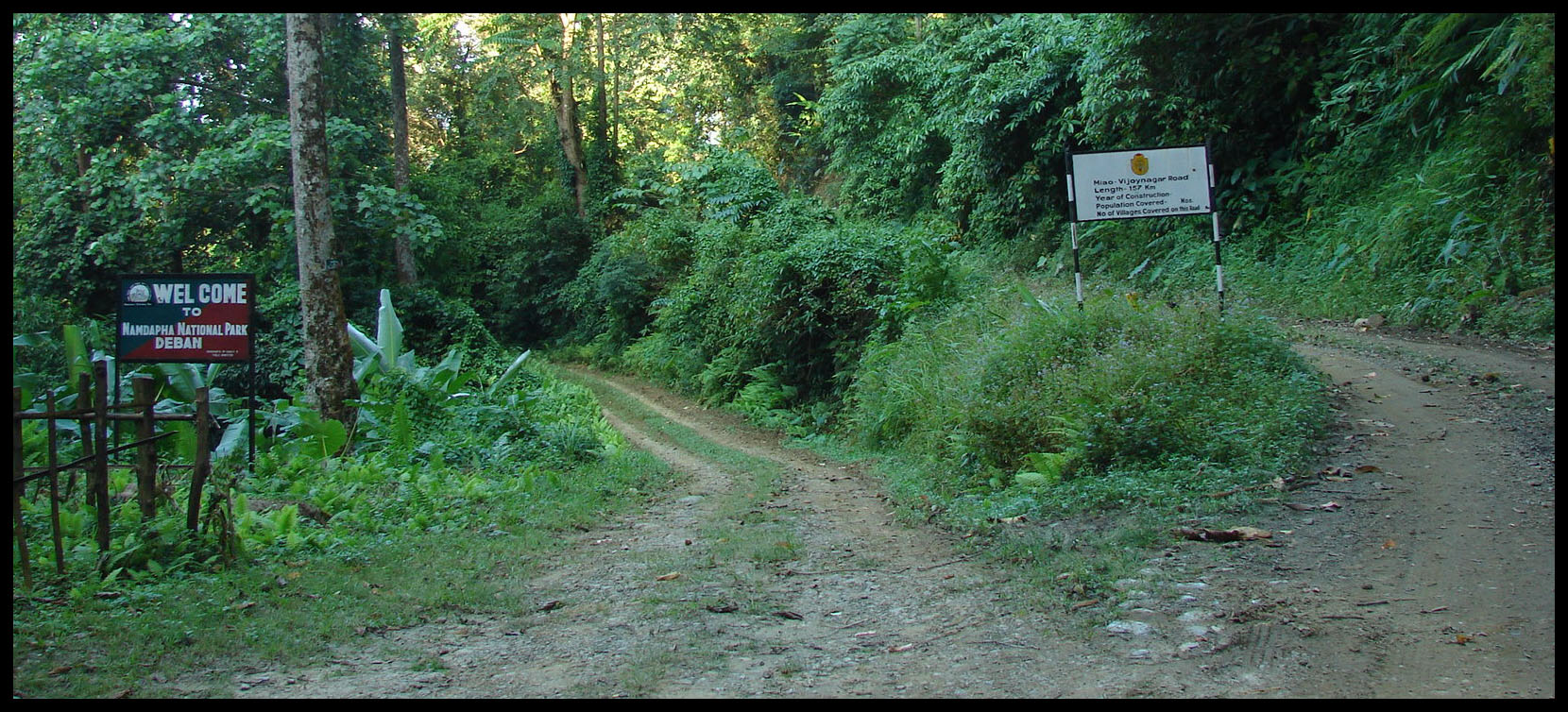
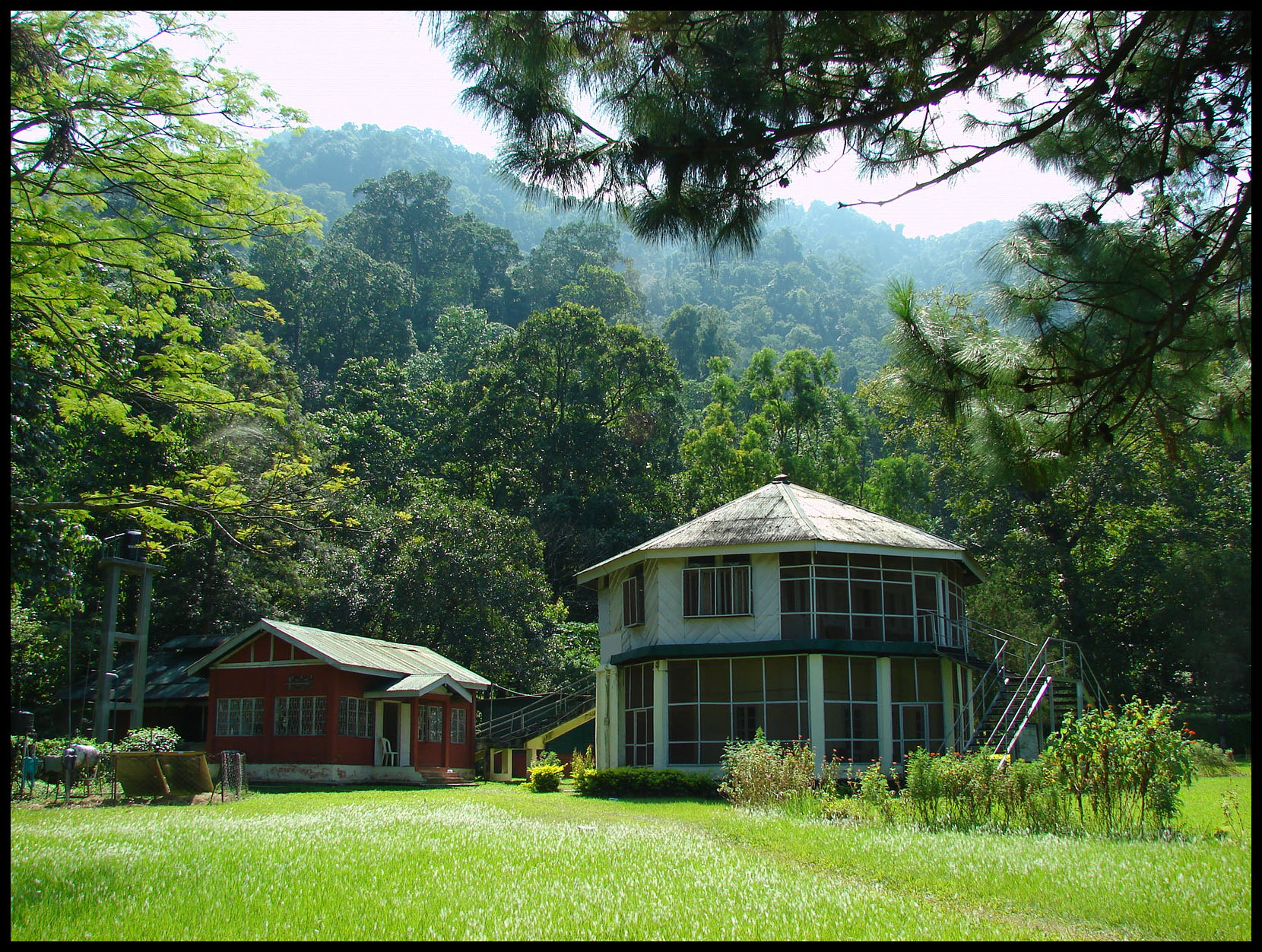


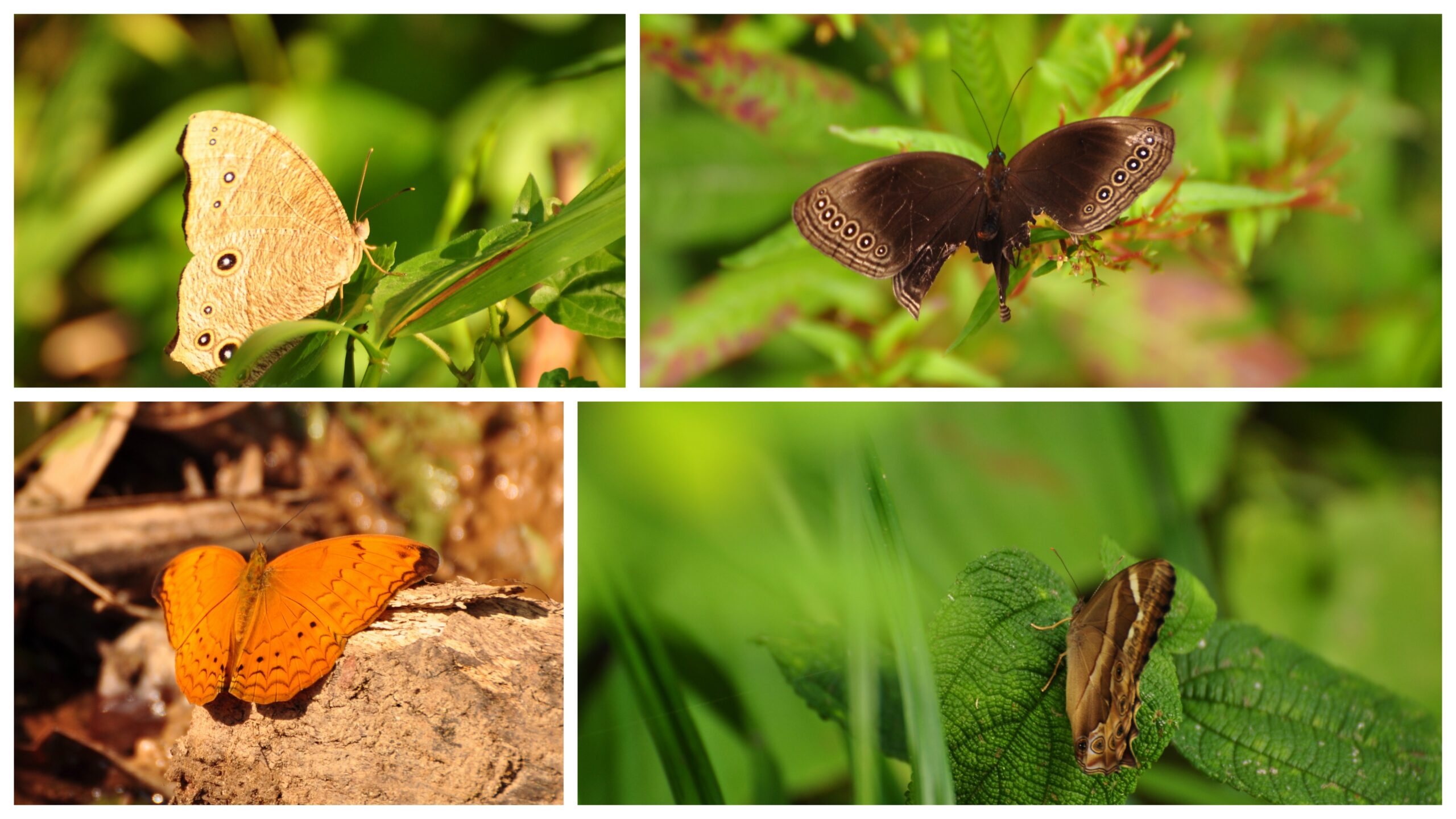
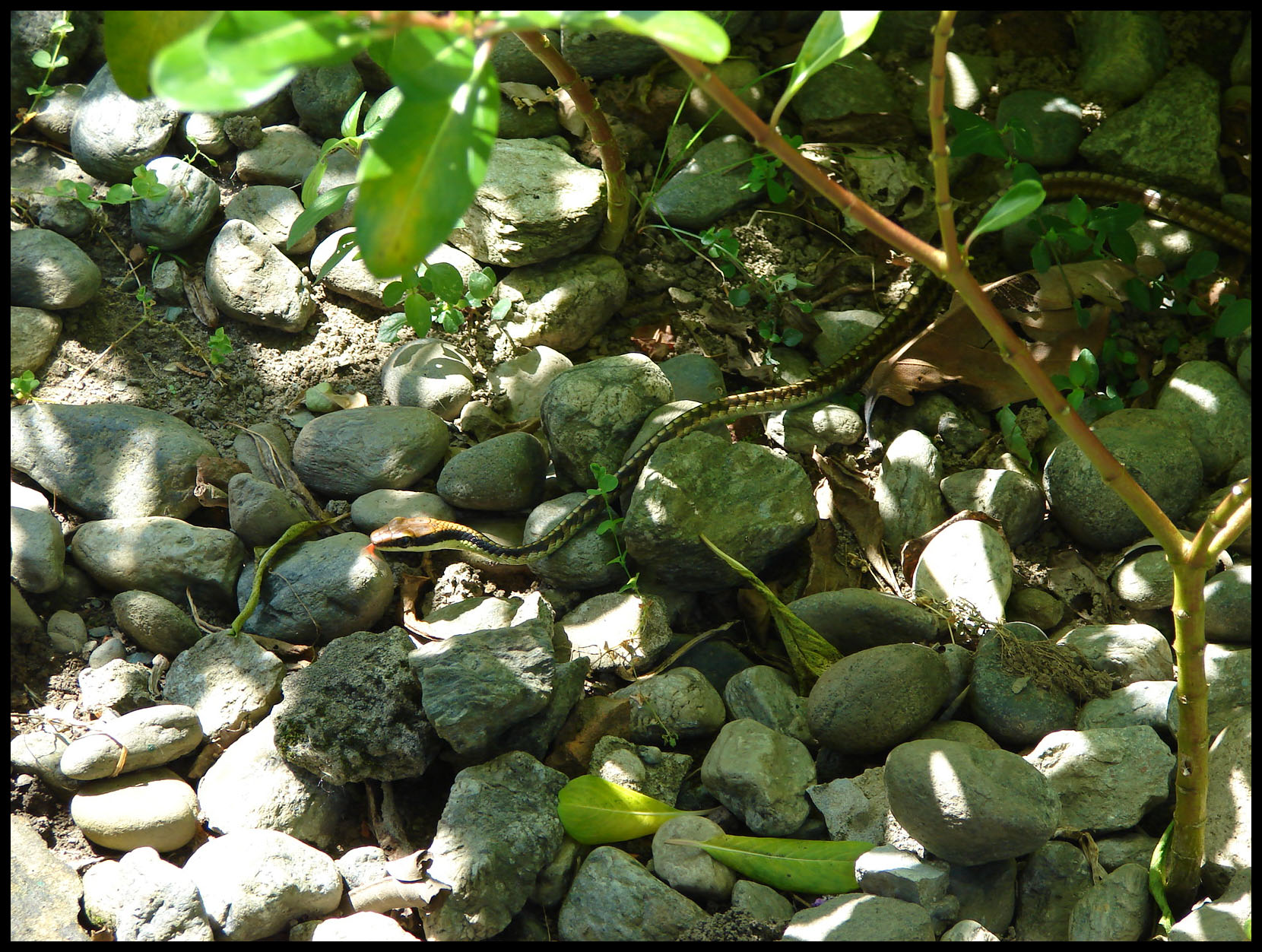
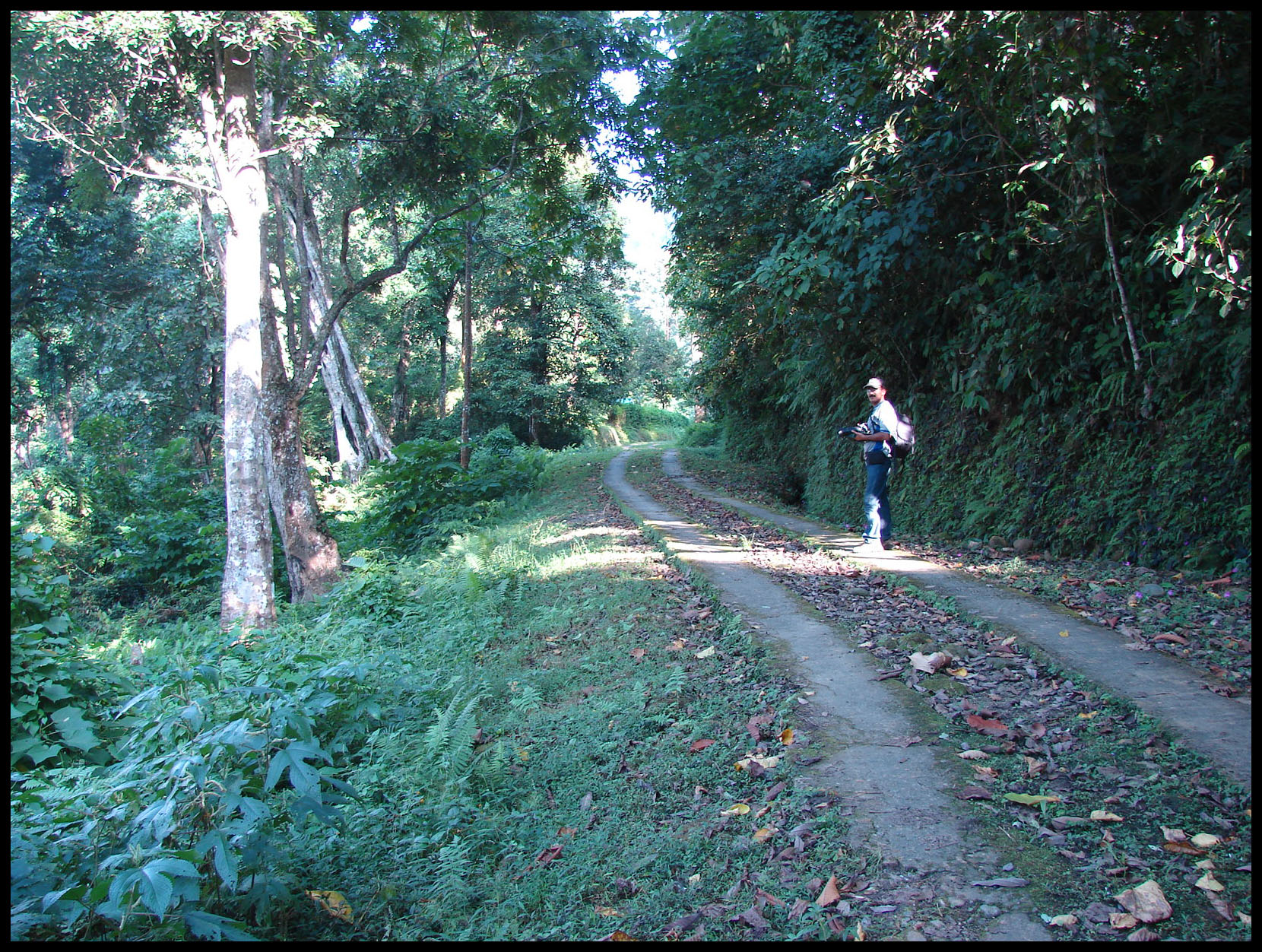
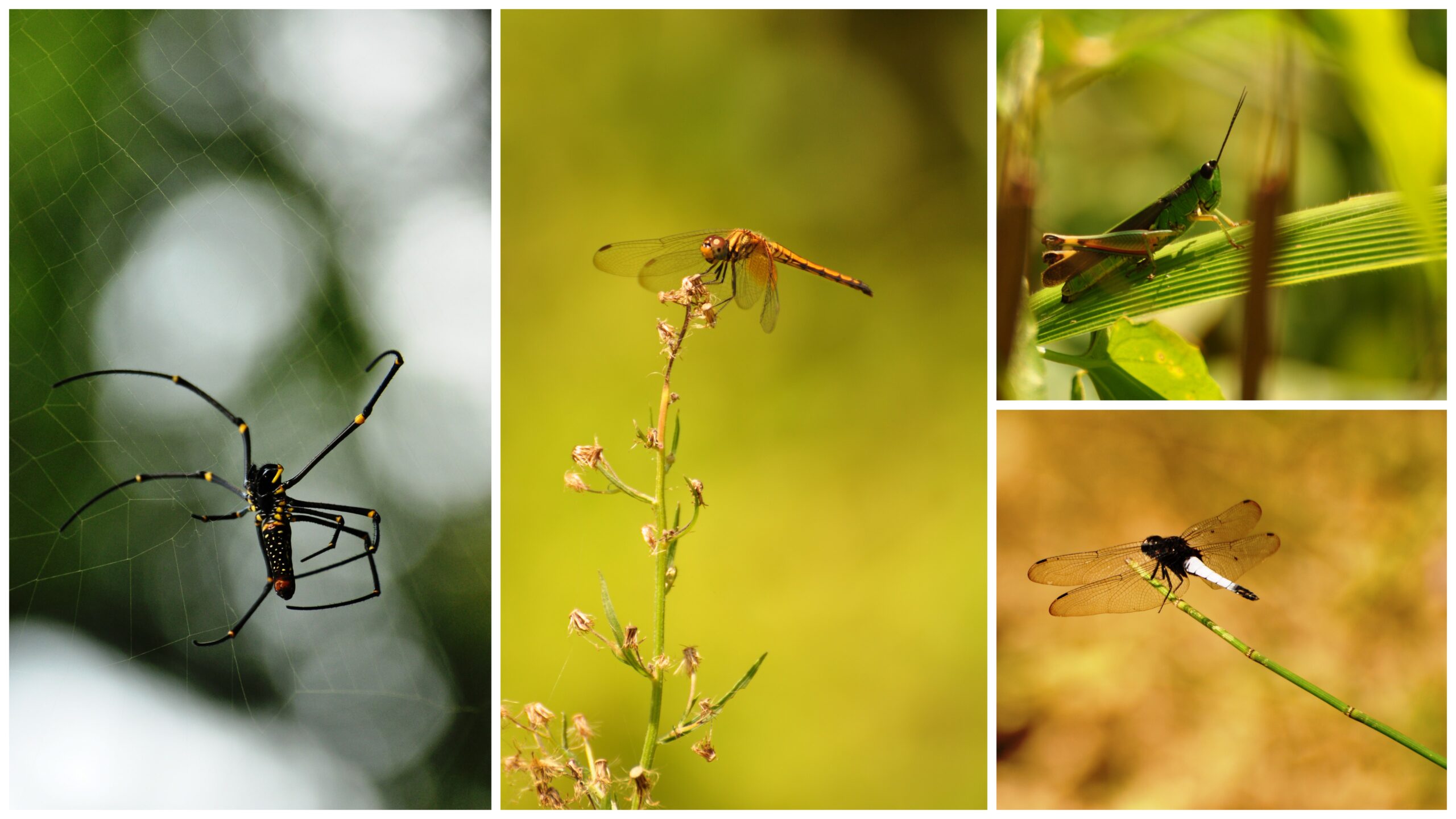
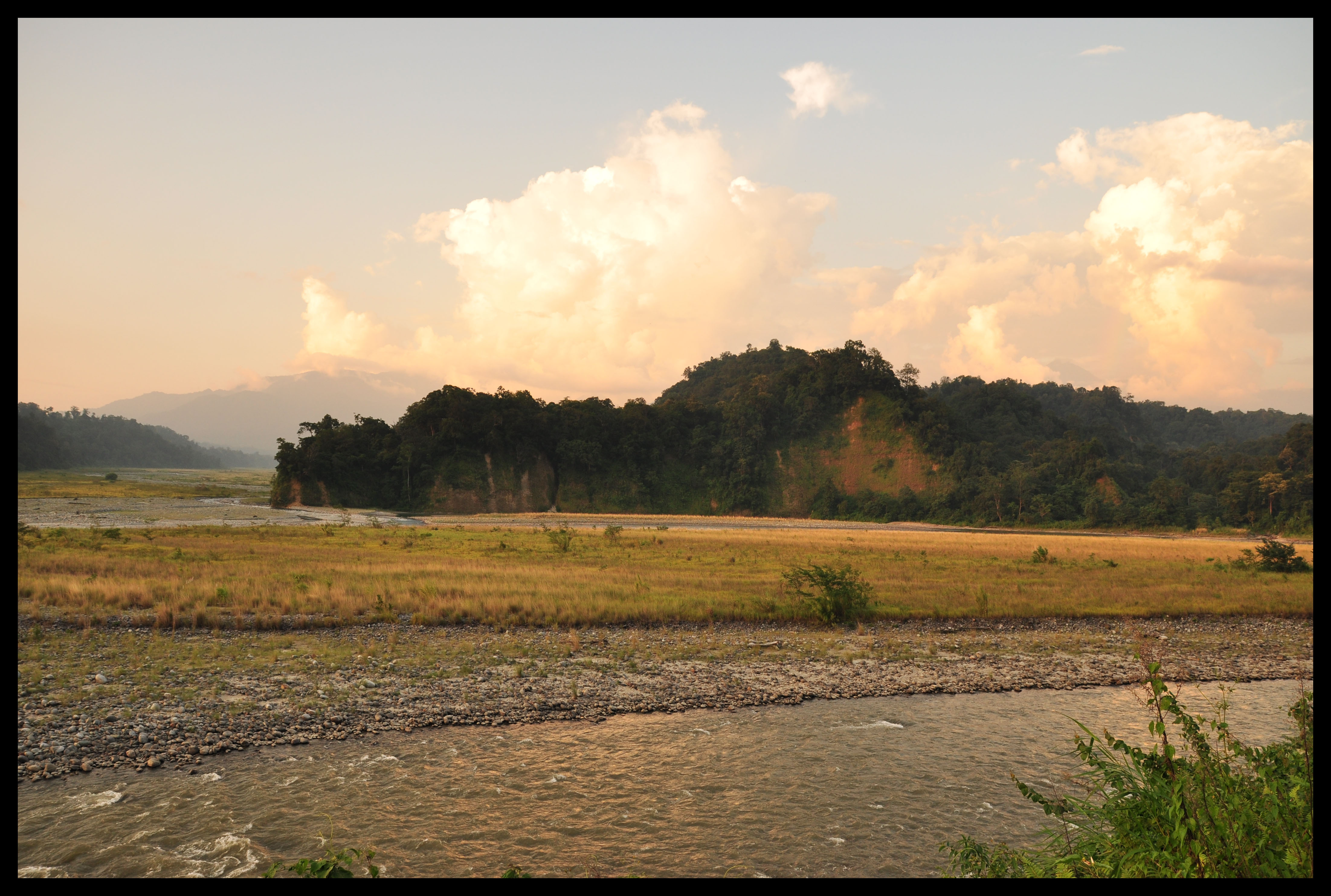
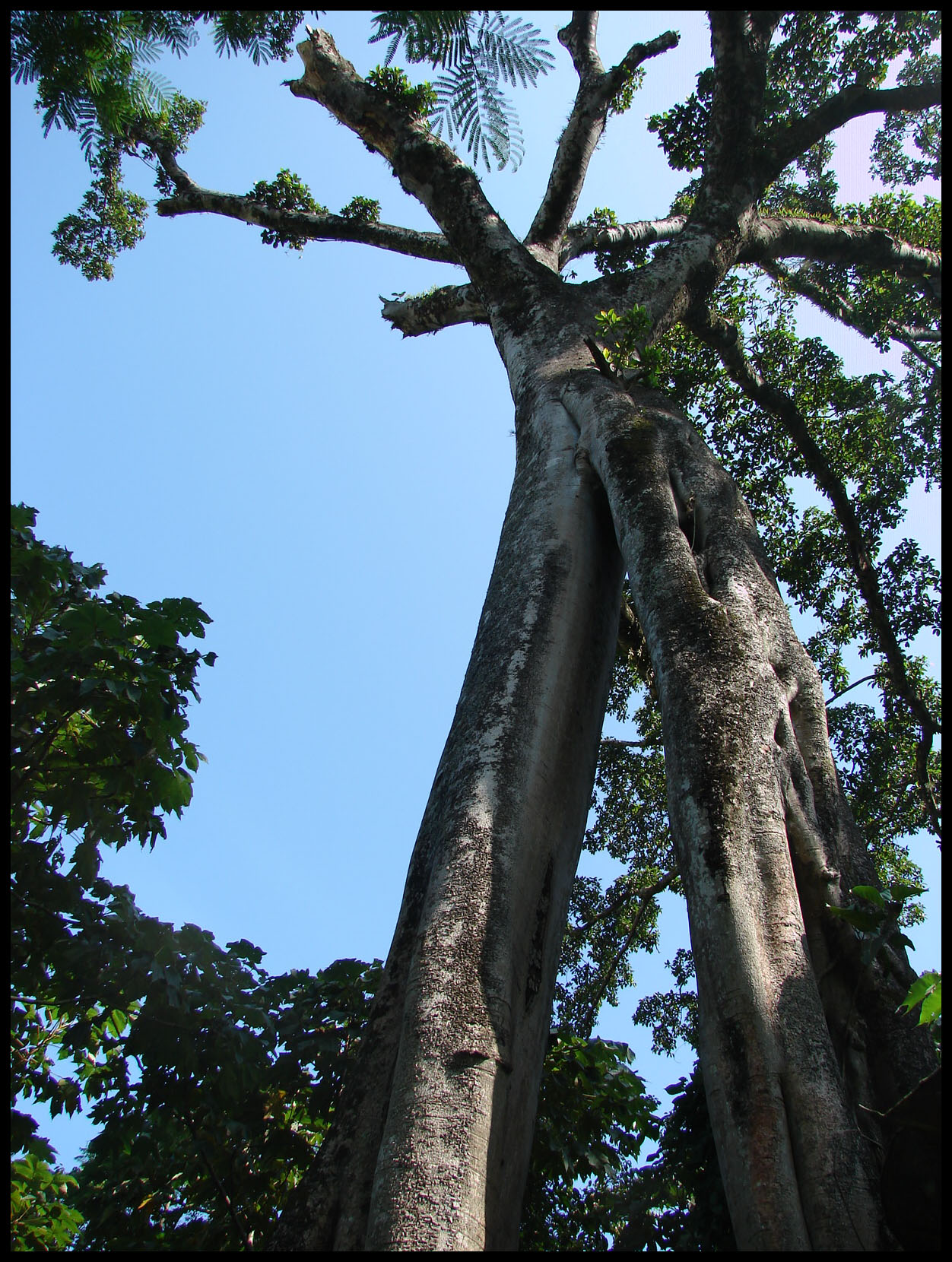


29 Comments
Excellent post! I was actually waiting for this post since long, from the time you had written that you had been to Namdapha.Liked the simple and lucid writing style as well.
Arnab, Thanks for the comments. I was eager to finish my post too 🙂 . Happy you liked it.
Beautiful… Wish to witness them 🙂
Thanks Deepak for the comments and vote. Hope you get go to Namdapha.
Thanks for taking me along with you to Namdapha!!! After reading and writing about such interesting places for the last month or so, I was doubtful whether I will be able to enjoy any travelogues again… Thanks to you, I found out that I can!!!
Thanks Nisha. You know those ‘readings and writings’ that we have been doing for the past one month have actually changed my perspective. Hope its for the best.
Wonderful post. It seems to be an awesome place. Keep travelling.
http://www.rajniranjandas.blogspot.com
Thanks Niranjan. Yes it is an awesome place, but less frequented.
Wonderful place and off course nice pictures
Thanks teamgsquare for the comments and visiting my blog.
It is always a pleasure to read about people’s experiences in Namdapha National Park. All have a little similarity to them, that of being overwhelmed by the mighty jungle that Namdapha is. By the chirping of birds, by the insects, the leeches, and by the lure of a predator lurking somewhere around.
I wish you had gone more deeper into the jungle, to the many camp sites inside. It is a magical experience, to feel that the jungle is alive. I have been to Namdapha three times, but I have only reached half-way yet. Had the craziest of experience, when on a trek last month, I had gotten lost in the jungle, but only to survive the and smile.
🙂
We had quite a few misses in this trip. We couldn’t go inside the Namdapha forest, Coudn’t visit Pangsau village, could not trek to Glow lake in Wakro and could not go to helmet top in Walong. But there is always a next time.
Yes, there’s always a next time. And anyway, you need many trips to explore the seven sisters properly. Hope you get a chance to come here soon. And let me know if you would need any help with ideas.
Beautiful place! Loved the first picture (with silhouetted trees and golden sky) and those macro insects you’ve captured! Amazing!
and living amidst the jungle for a couple of days sounds totally adventurous! North east always boasts of beautiful forest reserves and unspoilt nature..Now after reading your travelogues, I so wish to visit Arunachal pradesh soon!!
PS: Please add a watermark of your name or initials in the pictures as a copyright protection. Since the images are easily downloadable, anyone might use them!
Thanks Anuradha for the comments. Yes Northeast is a beautiful place, yet undiscovered. We spent about 21 days in and around Arunachal, Assam and Meghalaya and we did not get enough of it. I hope you get to visit these places soon.
Regarding watermark, I had earlier watermarked all my photos and then got comments regarding the same coming in way of the ‘beauty’ of the photograph. I am trying to find a watermark that stays on my picture without distracting the viewer. Thanks for the suggestion and concern.
Beautiful beautiful place, heaven on earth.. feel like going there right away! Thanks for sharing.
Thanks Arti. And this was just a speck of the heaven we got to see. Hope you get to go there soon.
Enjoyed your post with great photos, natural beauties, forests, landscapes and the animal lives. Only rarely get to see photos of places from northeast India!
Yes Firas, the northeast is rarely visited, documented and photographed. And we just covered a little area. There is so much more to see. Thanks for visiting my blog.
VERY NICE POST.IT FEET YOU ARE ACTUALLY TRAVELLING ALONG
KEEP IT UP:)
Thanks Prateek, for travelling along.
I often ‘visits’ your blog whenever Arunachal calls me. The virtual tours to Arunachal by your words and pics always gives immense pleasure and ‘jigeesha’ (a marathi word which means a wish to live immortal).. just to be with the beautiful nature.. and if not, to reborn there..
As you say, there are quite a few misses in life also..
True, I couldn’t go Namdapha forest, coudn’t visit Lake of No Return, could not trek to Dong and could not go to Helmet Top. But there is always a next time.
Thanks Alhad Sir, your words are inspiring. How wonderful it would be if we could get transported virtually into the magical land of Arunachal. I often wish it myself. And what is life without a few misses, it always gives you a reason to go back another time, many times.
Great blog, interesting read.. Would you mind if i asked you how to arranged everything? I’ve been dying to go to Namdapha, but have no idea how to go abt it, apart from getting there..
Thanks for the comments.
Mr. Phupla Singpho, who runs an NGO promoting tourism in Namdapha and also maintains an ecohut in Miao had helped us with our Namdapha stay.
His numbers are 03807- 22 2296 and cell 09436228763/09863096164. He is also on facebook (https://www.facebook.com/phupla.singpho). His mail-id is phupla@rediffmail.com. The Eco Tourist Hut, Miao numbers: 03807222999 or +919402037260.
You can also book a room directly at Namdapha by calling the Field Director Office No. 03807-222249.
There is a WLL line in Deban which you can call to get an idea on the road condition but they can’t provide booking, its controlled only from Miao. Their number is 03807-200825.
You will have to arrange for an ILP prior to that, which is necessary to travel in Arunachal.
Very informative and well-written. Thanks 🙂
WIll be going to Namdapha with BNHS and was planning to stay for a night or two at Miao. Incidentally, I’m going to be staying with Mr. Singpo too!
Your blog is absolutely fantastic. I plan to spend a few weeks romping around Arunachal post-Namdapha and I’m immensely happy to find a blog as useful as yours. There’s so little information out there about this remote corner of our country.
Glad to know that my blog did help you in a little way. What makes sharing experiences so worthwhile is when we can appreciate and also benefit from each other’s travels. I am so glad to have virtually met likewise travelers in the blogging circuit.
Do convey our regards to Mr Singpo and his lovely family. If you are planning to go to Wakro and beyond (ie to Walong) do let me know. I can give you a few phone numbers which could help.
Your blog is helping me in a BIG way in planning my route here 🙂
Judging by your posts, Wakro and Parashuramkund look spectacular. So, will certainly try going there post-Namdapha and if possible, beyond to Hayuliang and Walong. Will get in touch!
Thanks for the comments. And do try to visit Wakro, Parashuramkund and Walong. From Namdapha, you can travel to Wakro by crossing the sanctuary. We took the longer road route, travelling to Tezu and further. Also visit the Kamlang Sanctuary and Glao Lake (we couldn’t visit either).